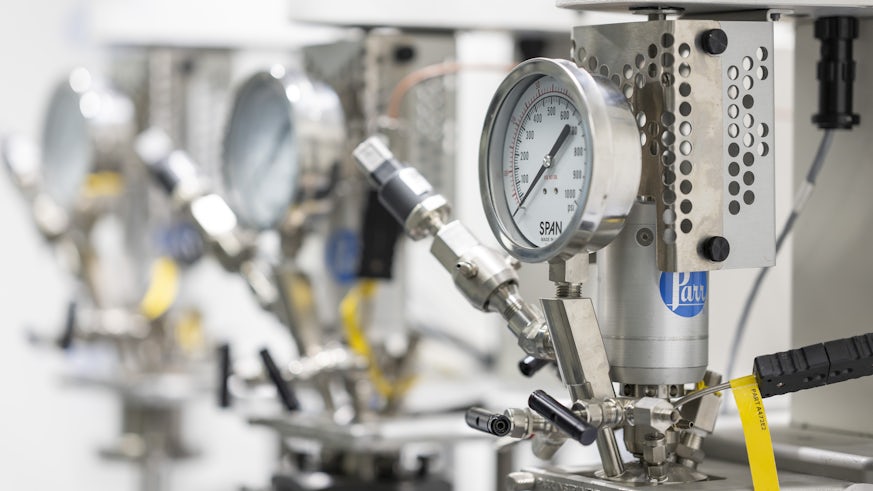A greener route to nylon production
26 September 2023

Research by Cardiff University scientists that could radically reduce greenhouse gas emissions that result from the chemical synthesis sector has been shortlisted for an IChemE Global Award.
The team from the Max-Planck-Cardiff Centre on the Fundamentals of Heterogeneous Catalysis (FUNCAT), have reported a brand-new method of creating cyclohexanone oxime - a pre-cursor to the plastic material Nylon-6.
A key construction material used in the automotive, aircraft, electronic, clothing and medical industries, Nylon-6 production is expected to reach around 9M tonnes a year by 2024, prompting scientists to search for greener, more sustainable ways of producing cyclohexanone oxime.
The IChemE Global Awards, which take place in Birmingham on 30 November, are widely recognised as the world’s most prestigious chemical engineering awards. Shortlisted in the Research Project Award, Cardiff’s work credits partners UBE Corporation in Japan and Shanghai Jiao Tong University, China.
Lead author of the study, Dr Richard Lewis, FUNCAT, based at the Cardiff Catalysis Institute, said: “We are delighted our work has been recognised by IChemE for its potential to precipitate a sea-change in industrial oxidation chemistry. Our project clearly shows how academic and industrial collaboration can significantly improve upon state-of-the-art technologies, creating significant cost savings and reducing greenhouse gas emissions from a major industrial process.”
Currently, cyclohexanone oxime is produced industrially through a process involving hydrogen peroxide (H2O2), ammonia (NH3) and a catalyst called titanosilicate-1 (TS-1).
The H2O2 used in this chemical process routinely needs to be concentrated, shipped and then diluted before use in a chemical reaction, effectively wasting large amounts of energy. Similarly, the stabilising agents used to increase the shelf-life of H2O2 often need to be removed before arriving at a final product, leading to further environmental costs.
To address this issue, the team has devised a method where H2O2 is synthesised in-situ from dilute streams of hydrogen and oxygen, using a catalyst consisting of gold-palladium (AuPd) nanoparticles that are either directly loaded on to the TS-1 or on a secondary carrier. The technology developed by the Cardiff team rivals the performance of the current industrial approach and has for the first time, decoupled the synthesis of a major commodity chemical from the industrial route to H2O2, achieving significant reductions in material costs.
The study was led by Cardiff University in collaboration with UBE Corporation, Shanghai Jiao Tong University, Research Complex at Harwell, University of Bath and Lehigh University.
Share this story
Our state-of-the-art catalysis facility supports world leading research in chemical sciences.



